Use Of VPNs In Iran Surge 30-Fold Since Start Of Protests

Amid heightened restrictions on Internet access following nationwide antigovernment protests, Iranians’ use of VPNs has risen over 3,000 percent in the previous month.

Amid heightened restrictions on Internet access following nationwide antigovernment protests, Iranians’ use of VPNs has risen over 3,000 percent in the previous month.
"Daily demand for virtual private network (VPN) services in Iran is up over 3,000% compared to before the protests," Simon Migliano, the head of research at Top10VPN, told Axios, adding that "This is a massive spike, given that demand was already healthy before the social media shutdown."
Many countries and companies are helping Iranians get easier access to information since the authorities have increased their restrictions. The US Treasury Department has given the greenlight to SpaceX CEO Elon Musk to activate satellite Internet service Starlink for Iranians and Google has just launched a VPN service for Iranians, but using such methods are not simple enough for ordinary people and still not many have managed to access the Internet via them.
Google says its Jigsaw subsidiary's open-source Outline tool – which allows third parties to set up secure VPNs that are resistant to disruption and censorship efforts -- has seen a spike in demand from Iran this week. One such third party, Nthlink, reported that its VPN saw a massive surge in use from 40,000 users a day to nearly a million at peak and continues to see usage at ten times a typical level.
People tend to circumnavigate cyber crackdowns by downloading virtual private networks, which allows them to get around restrictions to certain blocked sites, but such tools do not work when countries shut off basic internet completely, as is the case for several regions across Iran.
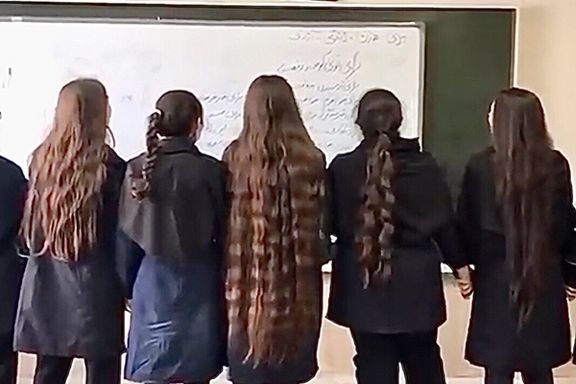
The ongoing protests in Iran have given rise to debates about the significance and implications of Iran's Generation Z that is defying rules and restrictions.
This is a generation that is also called the social media generation who were born after the year 2000, although teenagers as young as 12 now are protesting in Iran.
They are absolutely different from the previous generations in Iran. For the first time in the history of the Islamic Republic, this is a generation that has not been affected by state propaganda and enforced lifestyle. On the contrary, thanks to the Internet and satellite television, they know how other young people live elsewhere in the world and they find life under the restrictions imposed by the clerical regime humiliating.
As the current protests began more than two weeks ago, people noticed youngsters between the ages of 15-25 leading demonstrations in the streets carrying their backpacks and mostly dressed in black. They were not so afraid of Iran’s security forces as previous generations had been and were ready to break taboos.
Already, many girls and women among them walk around without hijab, while the protests started when a 22-year-old woman, Mahsa Amini was arrested by the hijab police and died in their custody with severe head injuries.
Schoolgirls without hijab driving out an education ministry official who came to convince the to "behave".
In an interview with Iran's leading economic daily Donyaye Eqtesad, Iranian sociologist and author Maghsoud Farastkhah tried to explain what is it that Iran's Generation Z wants. The interview was published on October 3, on the same day that Iran's high school and junior high school students joined the nationwide uprising.
According to Farasatkhah, to put it simply, Iran's new generation wants the right to live a normal life. However, they cannot not express their demands in the closed political system. The academic added that for the first time in Iran, the new generation's parents sympathize with them.
"Generation Z sees itself in a dystopian atmosphere," said the academic, adding that out of despair, they wish to express themselves by opting to resist the status quo even at the price of their lives. What Farasatkhah explains can be possibly best described as hopelessness. The reason why they act boldly and courageously is because they received a lot of attention by their parents and are self-confident.
This is a society suffering from inefficient governance, chaos and trauma. Everyone feels to have been victimized and overwhelmed by violence and accumulated shortcomings.
Farasatkhah further explained that the generation of the 2000s wants social freedoms, but it is not allowed to choose the lifestyle it likes. When the government imposes its own traditional lifestyle, it tends to resist, and this resistance is stronger among women because there are always more challenges for them than for men.
In a nutshell, Farasatkhah said that Generation Z has no epic to uphold and no hope for the future.
Another sociologist Taqi Azad Armaki said in an interview that Generation Z knows what it wants and it also knows that it is difficult to get it. Nonetheless, they will not become anarchists. Armaki added that Generation Z is not idealist. They simply want to live a normal life characterized by welfare, freedom and human rights. "But we have deprived them of this life. We have sent them to schools and universities, but we cannot give them a job. So, they have skills that they cannot use," Armaki explained.
The sociologist said: "We should stop calling them decadent, illiterate and morally corrupt. “These labels will prompt them to react in a radical way. We need to talk to them, but this needs to be done by intellectuals and social leaders."
Meanwhile, conservative politician and commentator Mohammad Mohajeri acknowledged that "it is difficult to deal with Generation Z." They do not care what traditions say about everything. The new generation has a different concept of freedom. On the other hand, while the previous generation got ideas from books, the new generation gets its ideas from social media. Mohajeri also pointed out that Generation Z has no leader and does not want to have leaders. They work like a tsunami and surprise the officials who have no idea about how to deal with them. Their only solution is to introduce more restrictions so that they can control the society. And this further annoys the new generation.
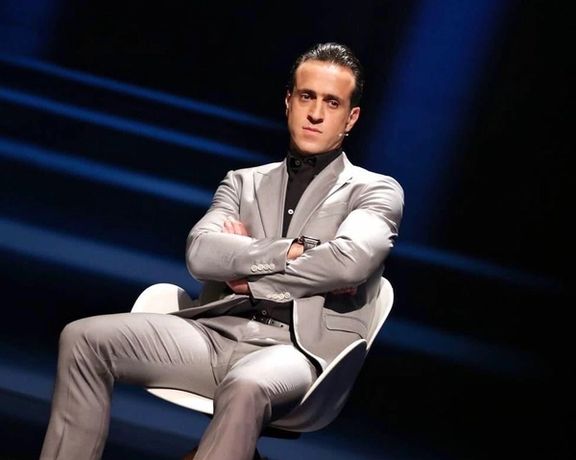
A popular Iranian former football (soccer) player has been charged in absentia for supporting ongoing antigovernment protests, Iran International has learned.
Ali Karimi who is currently abroad has been charged with unlawful “assembly and collusion with the intention of acting against national security.” This is an accusation the Islamic Republic regularly uses against dissidents and critics, with the slightest comment by an individual as grounds for a political crime.
Ali Karimi was one of the first celebrities who condemned the death of Mahsa Amini, who was killed while in the custody of Iran’s hijab police in September. Since then, Karimi has voiced support for protesters on social media becoming an icon for them. His tweets regularly generate more than 100,000 ‘likes’.
Iran International obtained the copy of a court document showing that Karimi has been charged. Although he is not in Iran, but his assets can be seized by the authorities.
Last week, security agents sealed the entrance of a villa near Tehran which was Karimi’s house, but later they removed the seal as they realized he had sold the property to someone else.
The popular protests in Iran do not have a clear leadership structure and are driven by teenagers and young people. Many celebrities who cooperate with the government to preserve their privileges in an authoritarian system, are careful not to praise the protesters. But those who side with them easily become more popular.
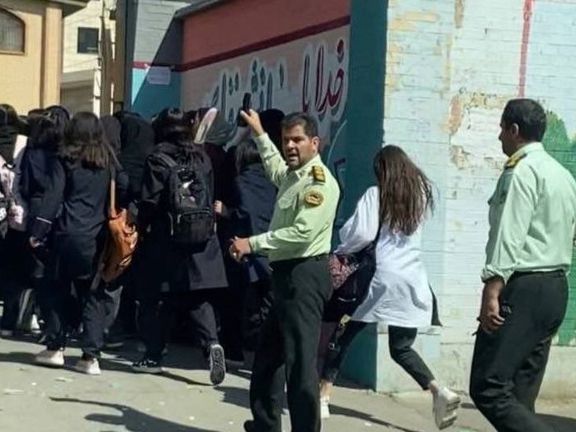
Following Supreme Leader Ali Khamenei’s lead, Iranian officials alleged on Tuesday that protests are instigated by foreign enemies while the unrest continues.
President Ebrahim Raisi on Tuesday accused “enemies of the Islamic Republic” of fomenting the protests, echoing what Khamenei said on Monday. Parliament Speaker Mohammad-Bagher Ghalibaf in turn vowed the parliament would take action to change the ways of the morality police in a bid to calm the protesters.
Protest rallies in universities continued Tuesday. A video shows students in their white uniforms staging a sit in on the campus of Rasht Medical Sciences University and holding placards silently. A video from Azad University in Najaf Abad, a conservative city in Esfahan Province, shows students clapping and chanting “Freedom, Freedom, Freedom”.
Social media users have also posted more videos of school children, particularly girls, refusing to attend classes and chanting in school yards and outside on Tuesday in various cities and towns including Tehran and Sanandaj. A video shows boys at a gifted students’ high school in Isfahan refusing to attend classes for a second day.
In many schools girls are refusing to wear their headscarves both in and outside the school. Girls and boys are also protesting by chanting, burning headscarves, writing graffiti, tearing down the photos of Khamenei and his predecessor, Ruhollah Khomeini, burning and trampling on the photos which are displayed in every classroom and government office.
Schoolgirls chanting "Women, Life, Freedom" on Tuesday, October 4
“We can’t study when the lives of our youth are being cut short, our brothers, our sisters,” a boy speaking at a student rally at a boys’ school says in a video posted on Twitter Tuesday.
In Esfahan, Iran's fourth most populous city, businesses went on strike Tuesday on one of the city’s major streets, Taleghani Ave, where most of the electronics shops are located. Several videos on social media show nearly all shops are closed or with shutters half-down.
There were no major late-night protests in Tehran and other cities Monday evening but in some areas of Tehran people continued to chant from their windows and rooftops and honked their horns in protest on busy roads.
“Don’t be mistaken. We’ll be out every night not just tonight!” people chanted Monday evening from their windows In Tehran’s western Ekbatan neighborhood, a massive apartment complex, while a group of youth marched from one apartment block to another chanting slogans such as “Death to Khamenei!”
“This system is being defeated because it has never had a theory about its own defeat. It only theorizes about its victory … You cannot contain this generation and interact with it with the same methods and thoughts as in the past,” Mohsen Renani, a renowned reformist economist and professor at Esfahan University, warned in a statement Monday. “Beware! Beware not to think that you can suppress [the protests] and all will be fine… It will remain like burning ambers under the ashes and reignite,” he added.
The IRGC which has so far not used overwhelming military force against protesters on the streets, continued its mortar and drone attacks on the positions of Kurdish Iranian insurgent groups in Iraqi Kurdistan for the eleventh consecutive day.
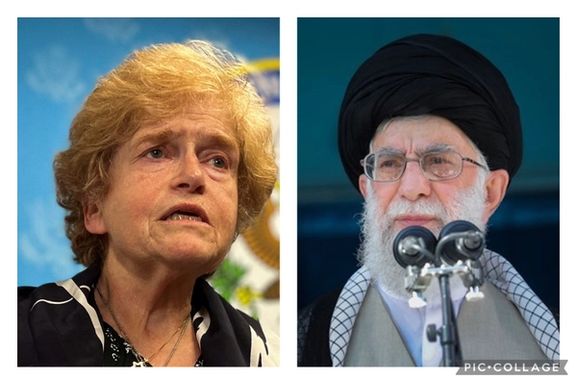
US envoy for battling antisemitism says the entire world as well as the Iranian people know that Islamic Republic’s inherent misogyny has sparked the current women-led uprising.
Special Envoy to Monitor and Combat Antisemitism Deborah E. Lipstadt said late Monday that Supreme Leader Ali Khamenei "can blame ‘Zionists,' the US, or anyone else, but it’s clear to the world and the Iranian people that his regime’s violent misogyny ignited these women-led protests.”
She was referring to Supreme Leader Ali Khamenei’s first reaction to ongoing unrest on Monday, saying that the protests were planned and not staged by "ordinary Iranians…I am saying explicitly and clearly, riots and insecurity were planned by America and the usurper, fake Zionist regime,” said the aging 83-year-old Khamenei who has ruled for 33 years.
Echoing Khamenei’s remarks, Iran’s President Ebrahim Raisi said on Tuesday the ongoing protests – triggered by the death in custody of 22-year-old Mahsa Amini -- are a riot organized by the US and Israel in order to prevent the Islamic Republic’s progress.
Also on Monday, US Congressman Brad Sherman (D-Calif) said that “Today the Ayatollah erroneously tried to blame the US and Israel for Iran’s protests.”
Referring to a bipartisan and bicameral resolution to commemorate Mahsa Amini's death and to convey US support for the protests, the representative added that “through resolutions like this, the world is showing that the truth behind the protests is clear, and that the support behind those calling for equality and justice in Iran is resolute.”
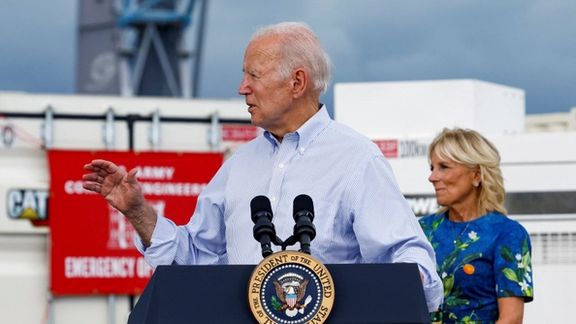
Iran’s government and media remained largely silent on Tuesday over US President Joe Biden’s condemnation of the violent crackdown against protesters in Iran.
Biden issued a statement on Monday saying he remains “gravely concerned about reports of the intensifying violent crackdown on peaceful protestors in Iran, including students and women, who are demanding their equal rights and basic human dignity.”
But the President went further and said, "This week, the United States will be imposing further costs on perpetrators of violence against peaceful protestors. We will continue holding Iranian officials accountable and supporting the rights of Iranians to protest freely."
Earlier in the day, Iran’s Supreme leader Ali Khamenei had already blamed more than two weeks of street protests on the United States, which he again labeled as “the enemy”.
The only response by Iran was a low-key statement by the spokesman of the foreign ministry Nasser Kanaani on Instagram, where he repeated customary criticism of US ignoring human rights in “Palestine and Yemen”.
Many Iranians saw Biden’s statement as a show of support that was more than what they had expected. Iranian activists and many others who reject the Islamic Republic do not forget President Barack Obama’s initial meek response to large protests in 2009. But Biden sounded a bit more resolute, given the fact that his administration has been negotiating for a year and a half to revive the Obama-era nuclear deal known as JCPOA and lift the sanctions imposed on Iran.
“For decades, Iran’s regime has denied fundamental freedoms to its people and suppressed the aspirations of successive generations through intimidation, coercion, and violence,” he said.

Gabriel Noronha, a former Trump administration official, reminded the public on Twitter that Secretary of State Antony Blinken in December 2017 had endorsed an advice to Donald Trump to remain silent over nationwide protests that had broken out in Iran.
Considering that the Biden Administration has not relinquished hopes of reviving the JCPOA and might still reopen suspended talks with Iran in the weeks and months ahead, Biden’s tougher position on Iran’s violations of human rights is a bit surprising.
Previous rounds of protests in Iran generally received less attention by Western media that has often treated the clerical regime with kid gloves. But this time it is different for several reasons.
First, it is important that the protests began when a 22-year-old woman was arrested for “improper hijab” and then received fatal head wounds in police custody and died. Mahsa Amini’s story caught the attention of the world and her hashtag surpassed 100 million retweets, easily dwarfing any previous issue.
Second, mostly very young Iranians began protests and persevered for more than two weeks, bringing images of teenage girls removing their headscarves and facing a brutal security force that in November 2019 had killed more than 1,500 protesters without hesitation.
Third, the power of social media in bringing these events to billions of smart phones made classic media a bit irrelevant. No one waited to see what the New York Times reports, and far, far fewer people would even read any reporting compared to hundreds of millions who instantly saw what was happening in Iran on their phones and computers.
These factors made the Iran issue powerful, and Biden reacted a bit differently than Obama. Mahsa Amini became a face people everywhere could relate to and easily understand what is wrong in Iran.
The old arguments that criticizing the clerical rulers in Iran would harm dissidents or lessen the chance of a rapprochement with Tehran, seemed weak - an Obama-era view that was tested and failed.
The argument of those who have been saying that the Islamic Republic is a multi-faceted threat and not just a nuclear issue has been strengthened. Europeans also seem to have been a bit shaken by Mahsa Amini’s death and it won’t be easy for Iran’s clerical rulers to overcome the international awareness about the nature of their rule.